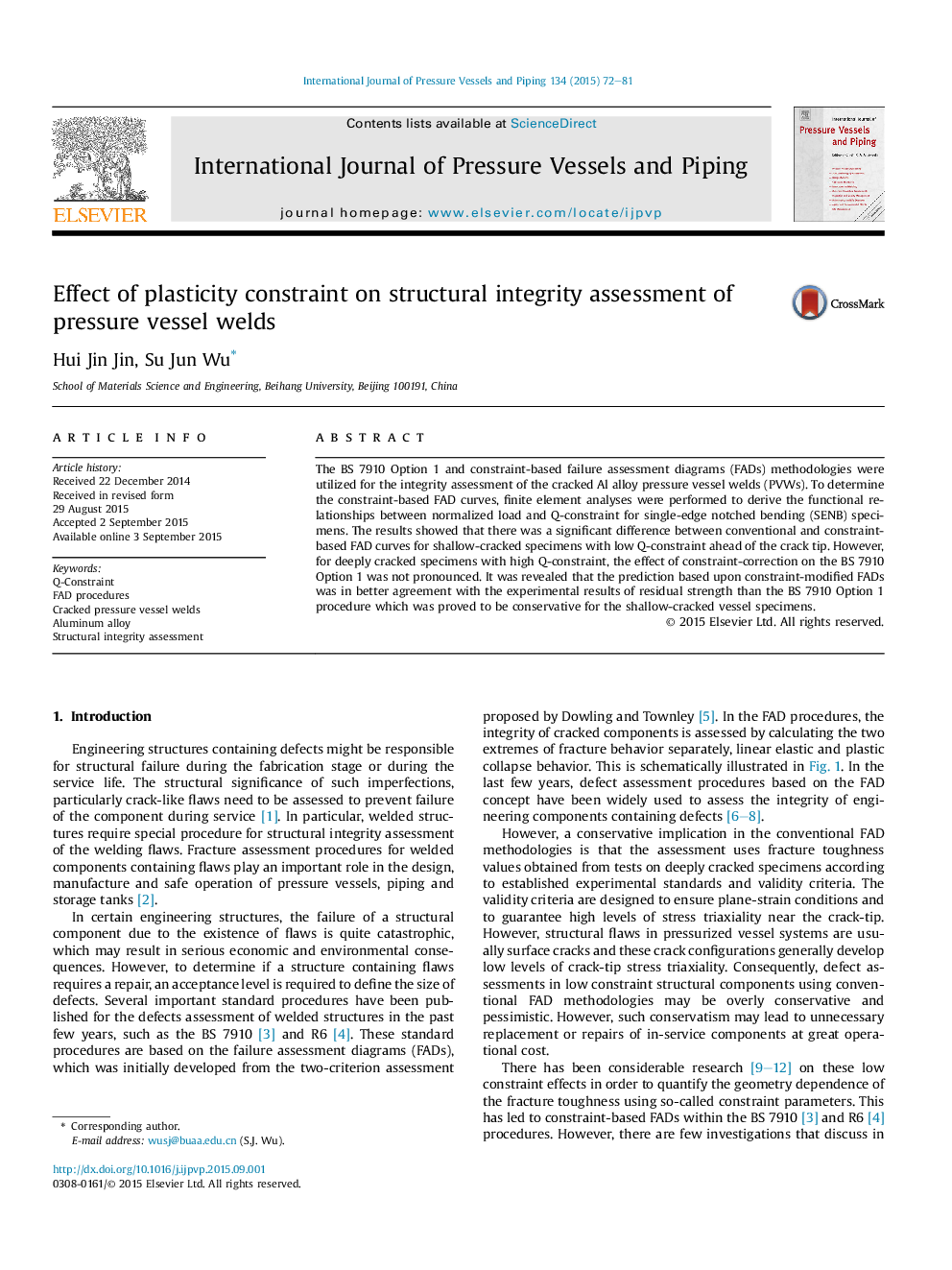| Article ID | Journal | Published Year | Pages | File Type |
|---|---|---|---|---|
| 790669 | International Journal of Pressure Vessels and Piping | 2015 | 10 Pages |
•Q-stress as the function of normalized load was analyzed by FEM.•Effects of Q-constraint on failure assessment diagram (FAD) were discussed.•The predicted results using FAD procedures were compared to experimental values.•The predicted results using the constraint-modified FAD were very satisfactory.
The BS 7910 Option 1 and constraint-based failure assessment diagrams (FADs) methodologies were utilized for the integrity assessment of the cracked Al alloy pressure vessel welds (PVWs). To determine the constraint-based FAD curves, finite element analyses were performed to derive the functional relationships between normalized load and Q-constraint for single-edge notched bending (SENB) specimens. The results showed that there was a significant difference between conventional and constraint-based FAD curves for shallow-cracked specimens with low Q-constraint ahead of the crack tip. However, for deeply cracked specimens with high Q-constraint, the effect of constraint-correction on the BS 7910 Option 1 was not pronounced. It was revealed that the prediction based upon constraint-modified FADs was in better agreement with the experimental results of residual strength than the BS 7910 Option 1 procedure which was proved to be conservative for the shallow-cracked vessel specimens.
